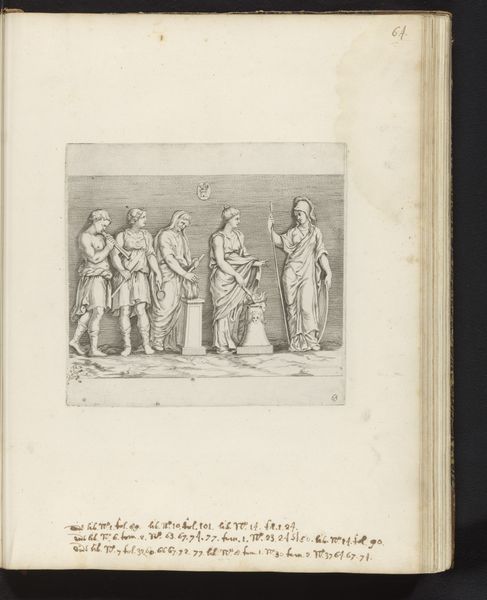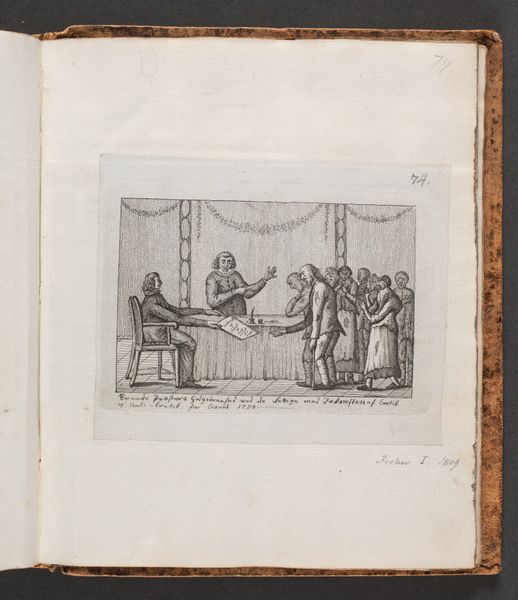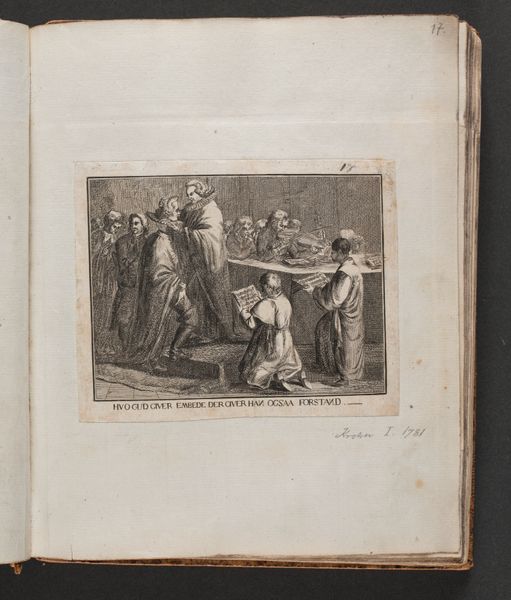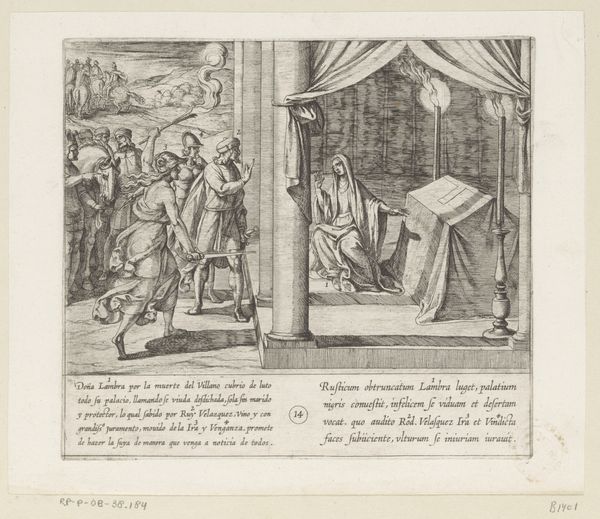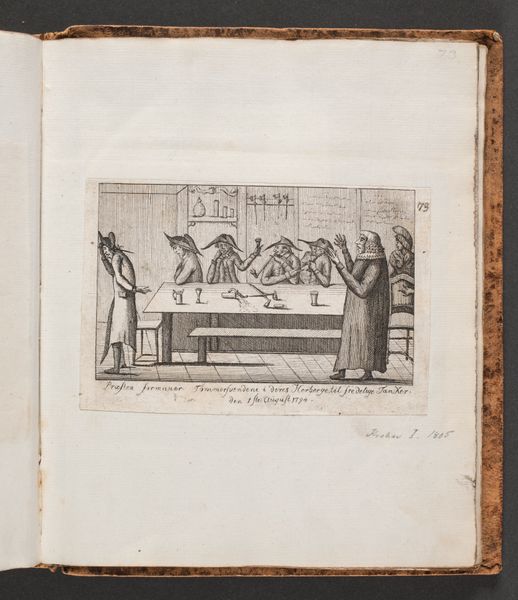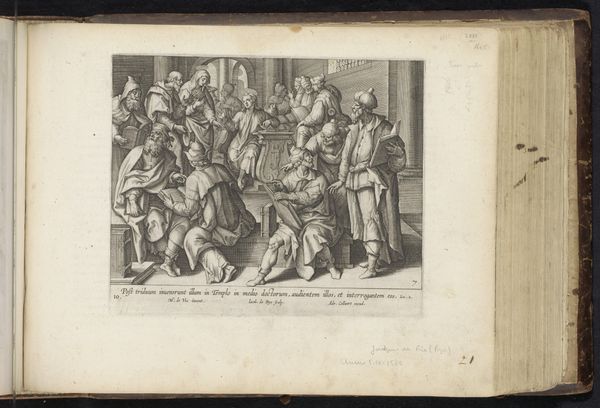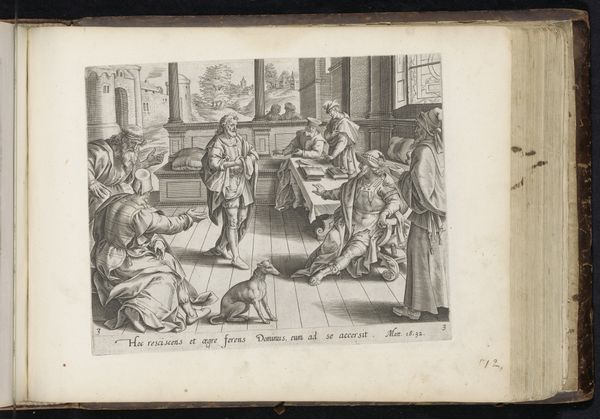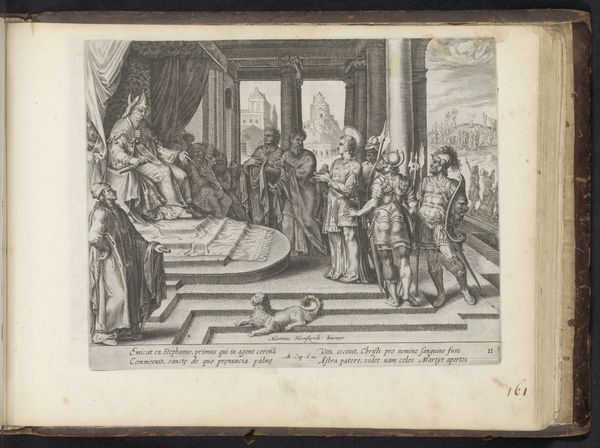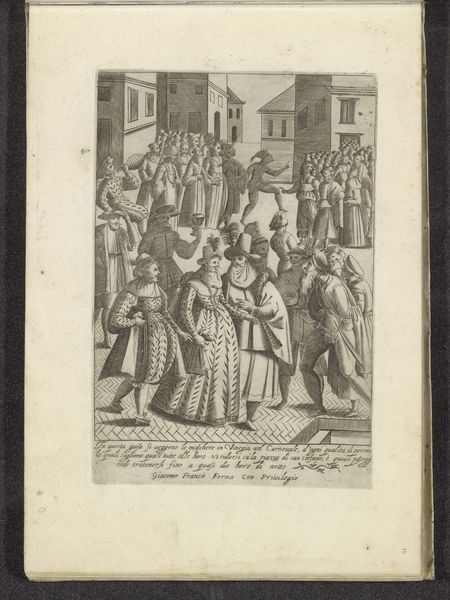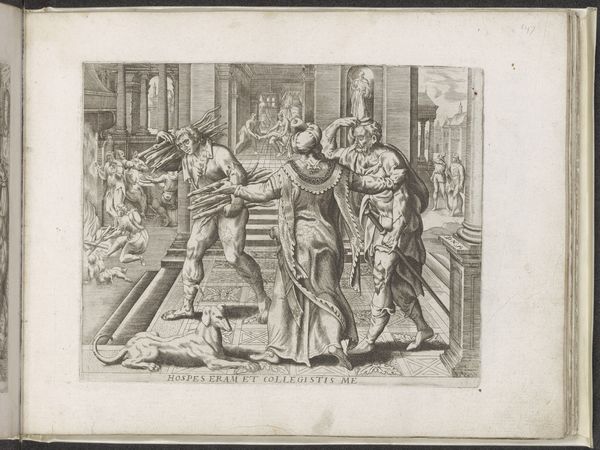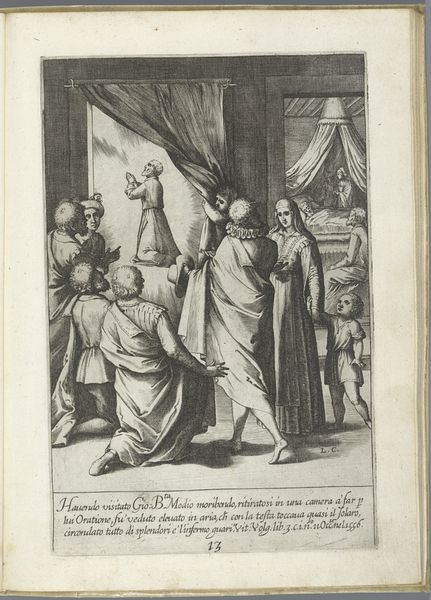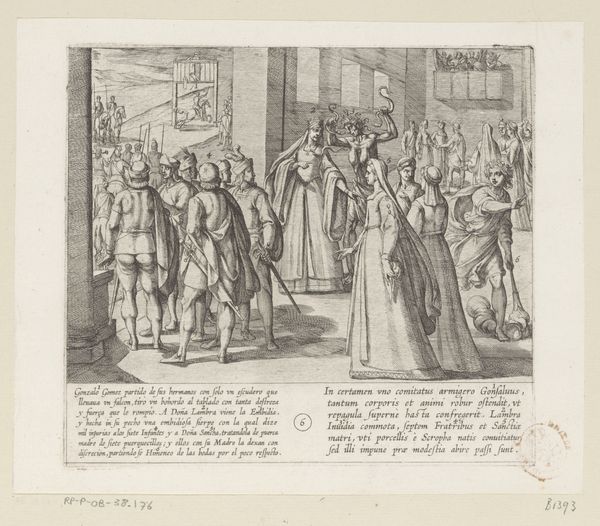
drawing, print, etching, paper
#
drawing
# print
#
etching
#
paper
#
romanticism
#
genre-painting
#
history-painting
Dimensions: 127 mm (height) x 154 mm (width) (plademaal)
Editor: So, this print is called "Prinds Köruds Bryllup d. 6 July 1798", made in 1798 by Georg Fahrenholtz. It looks like an etching on paper, depicting a wedding scene. It's quite small and the figures are so stiff and formal. What do you see in this piece? Curator: It’s fascinating how this etching captures a moment of societal ritual. Notice how Fahrenholtz frames the wedding not just as a union of two individuals, but as a public performance. Consider the role of prints like this at the time. Who was the audience and what was the function of representing the elite's nuptials? Editor: That’s a good point. I was so focused on the people, I didn’t consider the *why* behind depicting them. It’s like he’s showing off their status. Was this typical of the era? Curator: Precisely. Romanticism, although known for its focus on emotion, often served specific social functions. These depictions helped cement social hierarchies, conveying ideals of marriage and lineage to a broader audience. Also, observe the deliberate arrangement of figures. Who seems to be the focal point? Editor: Definitely the bride and groom. Everyone else seems to be orchestrating or witnessing. The scale emphasizes them. But are they truly the center or are other institutional actors actually guiding it? Curator: An interesting question. Perhaps the artwork asks the very same question: who holds power within this most sacred event? So, what does a work like this tell us about the societal function of art at this point in time? Editor: It really makes you think about weddings, even now, and how they perform certain cultural roles and reinforce power structures, which are obviously always at play. Thank you! Curator: Indeed, and hopefully this gives us some perspective on how visual culture shapes and reflects our understanding of history and ourselves.
Comments
No comments
Be the first to comment and join the conversation on the ultimate creative platform.
